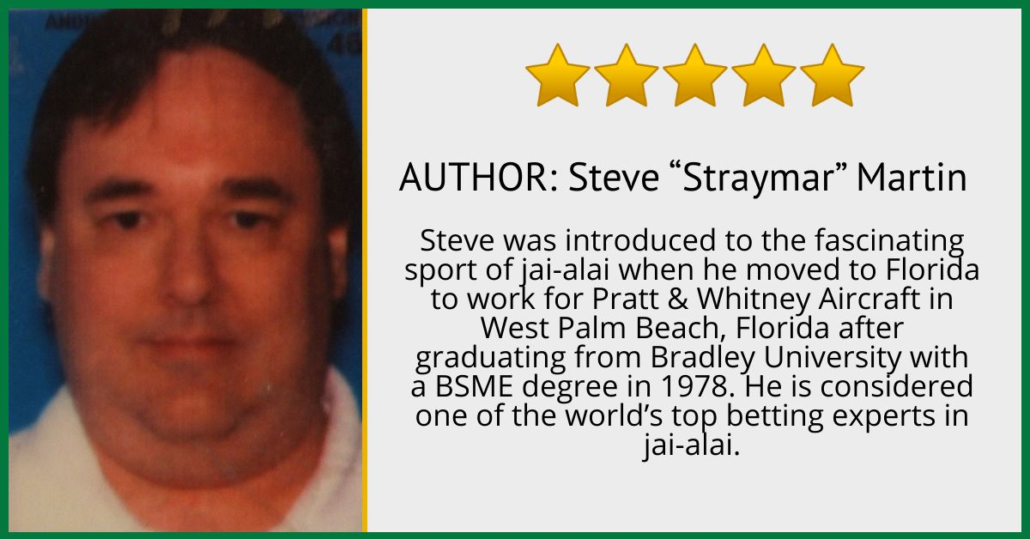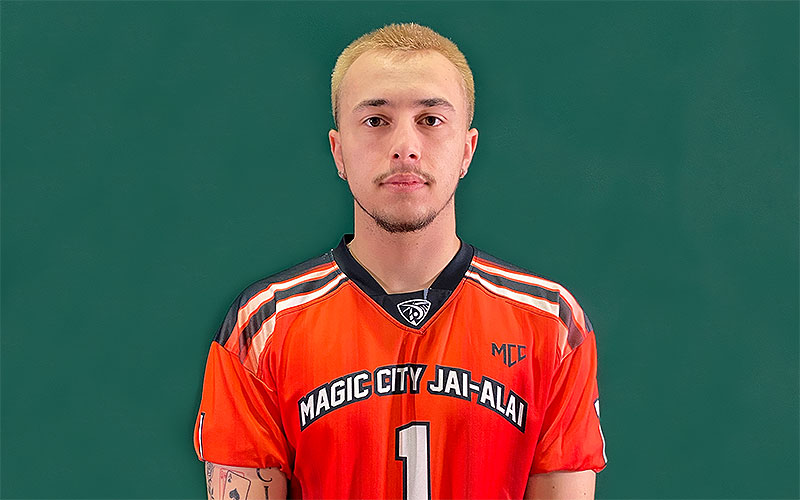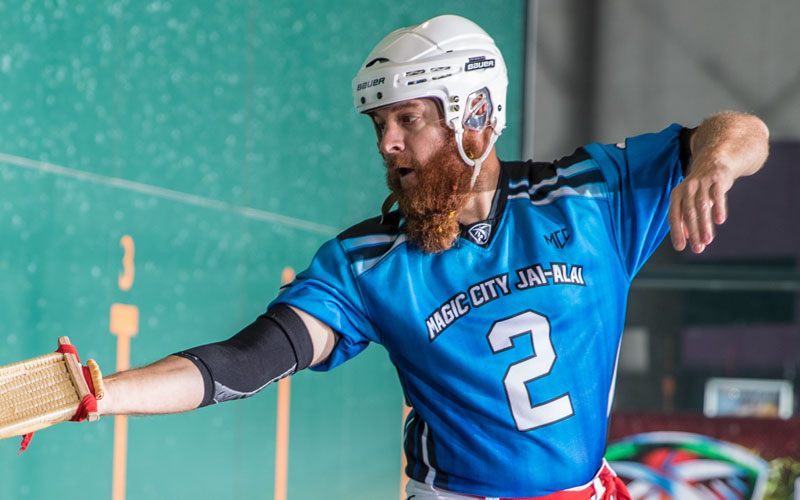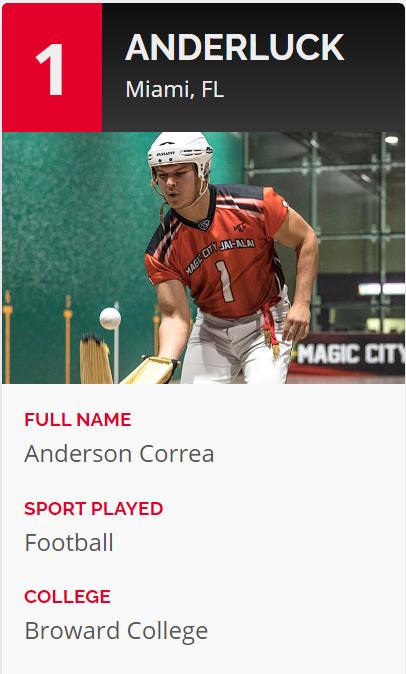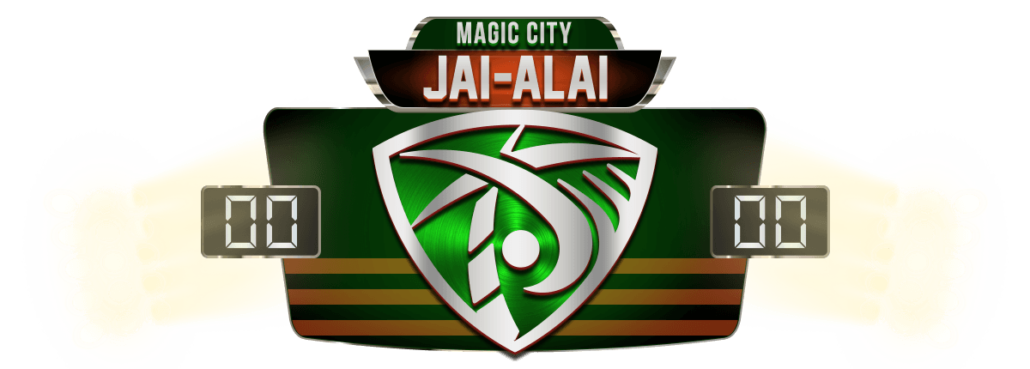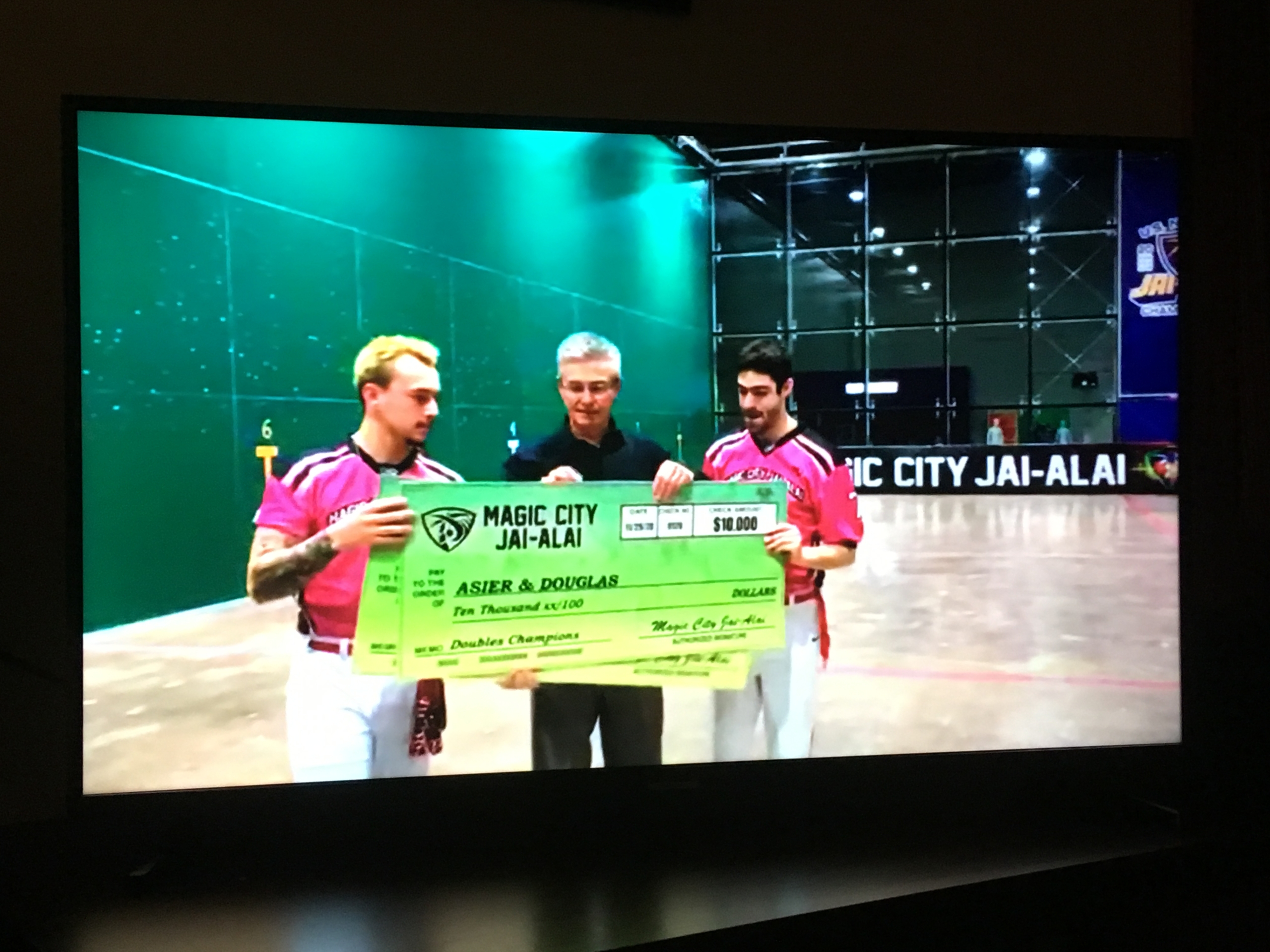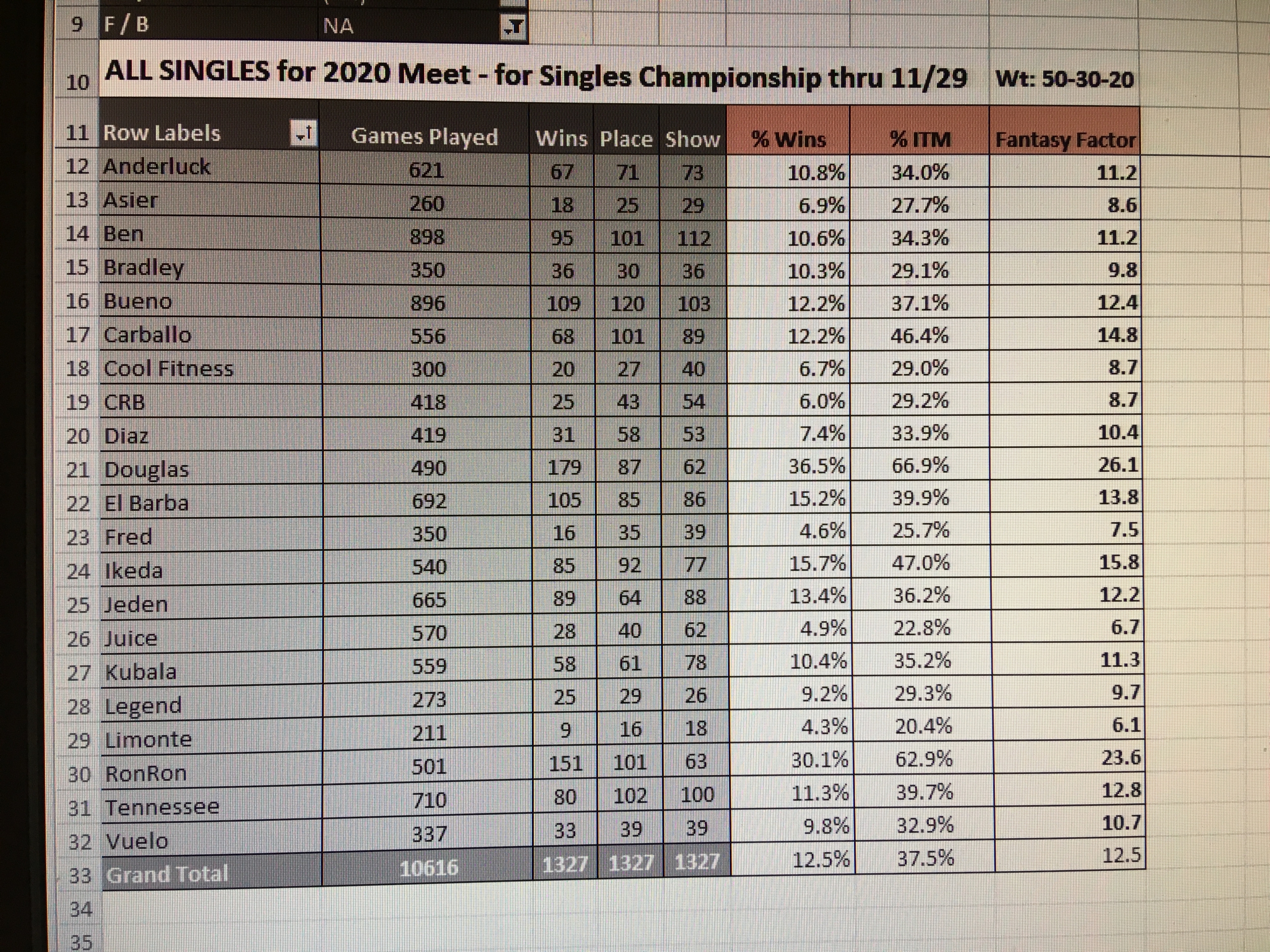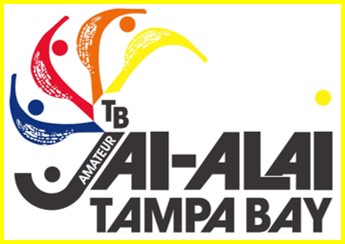
Fast-paced short-court Jai-Alai action concluded for week 14 of the regular season on Tuesday, August 3rd with Benny, the youngest professional on the roster and brother of top player Douglas, nabbing his first Golden Cesta Award since starting on February 6th this year. Benny won 6 of his 12 singles games and was 83.3% ITM in his 12 games, besting Julen’s 2nd place of 53.3% ITM quite decisively. Congratulations Benny on this great achievement! The doubles team of Diaz-Douglas took top honors for the week with 8-3-2-0 for 37.5% wins and 62.5% ITM. Currently, Cool Fitness-Spinner lead the 3rd doubles tourney of the year with 6-wins while Diaz-Douglas have 4 and Kubala-Benny have 3-wins.
The Singles Championship remains quite the battle with 8-players of the Magic City 20-player roster still within 8-wins of each other. El Barba & Julen have 37, Douglas 36, Benny 35, Ben 34, Anderluck & RonRon 33, and Ikeda 29. The next best on wins is Tennessee with 25, Kubala 24 and Spinner with 23. This group of three is then followed by others with 16-wins and less.
Week 15 of the regular season kicks-off on Saturday, August 7th, with a 1:30-pm performance where live fans are allowed in the fronton. Seating starts at 1:00 pm. Don’t forget the exciting H2H doubles games which follow at 5-pm where live fans are also allowed. Live fans for Saturday’s H2H doubles can also get in on one FREE shot at $3,000 on Saturday; the new 6-Picks Promotion. There was $1,000 added to the previous $2,000 carryover making this jackpot $3,000 since nobody again selected all six H2H doubles games correctly on Saturday July 31st. One contestant had the first 5-matches correct and missed on the last match. Generally, the person(s) picking ALL 6-winners of the (6) H2H doubles matches split $1,000. There are 64-different combinations of picking all 6-matches and each participant gets only ONE chance, so this is not impossible by any means. This 6-Picks Jackpot continues to grow by $1,000 weekly until a contestant correctly picks the winner of all 6-matches (multiple winners of all matches split the Jackpot). So far there have been lucky winners the first two Saturdays, July 10th and July 17th. Those winners each took home a cool $1,000 cash. Be sure to understand all the rules for this promotion if you are participating in this on-site contest at Magic City Jai-Alai and get your entry in before the deadline. We do know you must be present at the conclusion to collect if you are a 6-Picks winner.
Don’t forget to get those Magic City Fantasy Jai-Alai League selections locked-in before the start of Saturday’s game 1! Contestants need to be mindful of the entries change on Saturday’s live performance where the late-game players now play an extra feature game in addition to game 6 & 8. These late-game players get to wow the crowd by competing in middle game 4 on Saturdays only.
The week 15 entries are expected to be scratch-free for the start of the week. RonRon continues to be out with knee/back pain and is expected to be out for 3-4 weeks. El Barba and Ikeda are back in action for week 15 and are listed in the entries for Saturday & Sunday.
